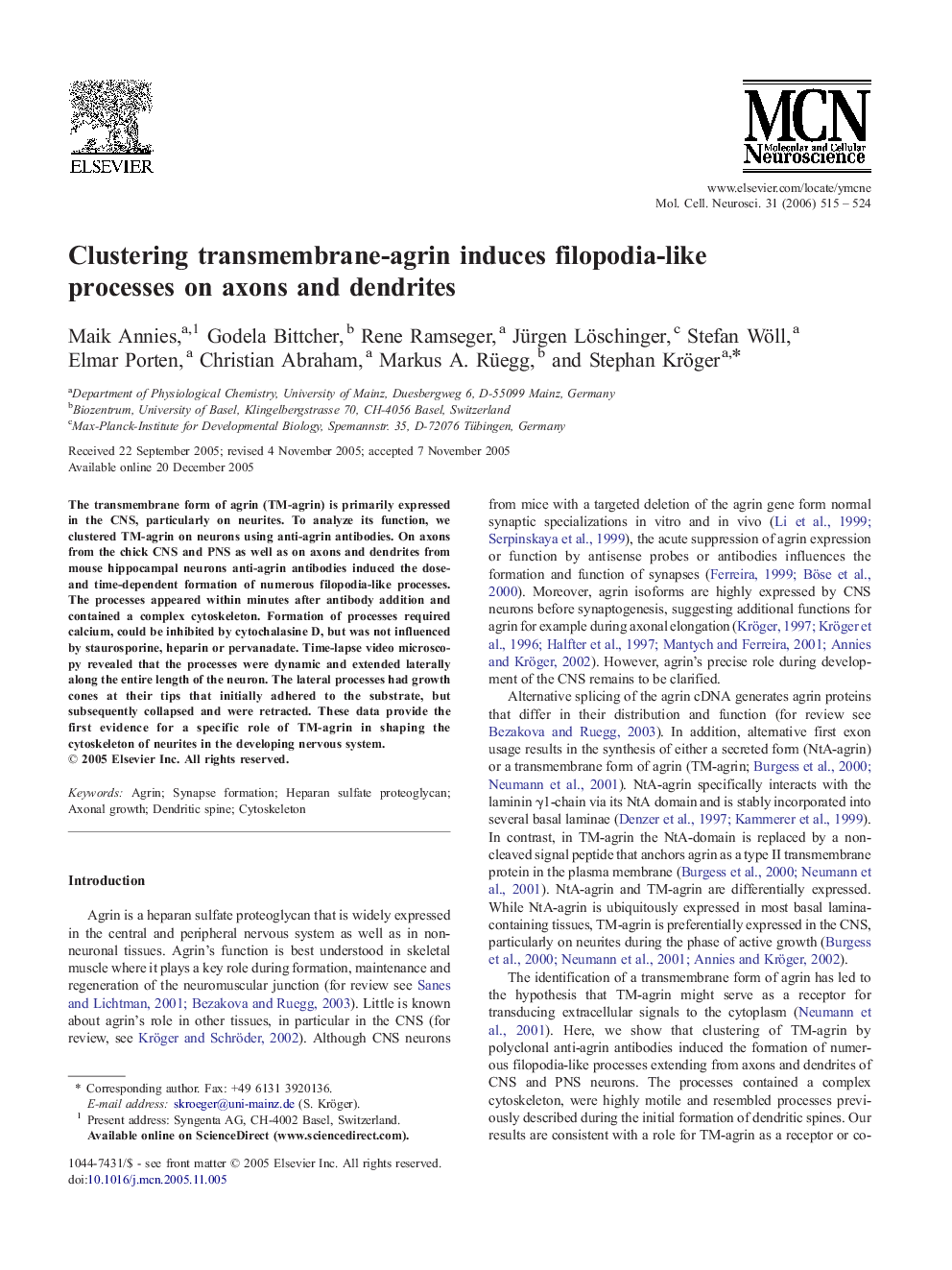| کد مقاله | کد نشریه | سال انتشار | مقاله انگلیسی | نسخه تمام متن |
|---|---|---|---|---|
| 2199385 | 1099445 | 2006 | 10 صفحه PDF | دانلود رایگان |

The transmembrane form of agrin (TM-agrin) is primarily expressed in the CNS, particularly on neurites. To analyze its function, we clustered TM-agrin on neurons using anti-agrin antibodies. On axons from the chick CNS and PNS as well as on axons and dendrites from mouse hippocampal neurons anti-agrin antibodies induced the dose- and time-dependent formation of numerous filopodia-like processes. The processes appeared within minutes after antibody addition and contained a complex cytoskeleton. Formation of processes required calcium, could be inhibited by cytochalasine D, but was not influenced by staurosporine, heparin or pervanadate. Time-lapse video microscopy revealed that the processes were dynamic and extended laterally along the entire length of the neuron. The lateral processes had growth cones at their tips that initially adhered to the substrate, but subsequently collapsed and were retracted. These data provide the first evidence for a specific role of TM-agrin in shaping the cytoskeleton of neurites in the developing nervous system.
Journal: Molecular and Cellular Neuroscience - Volume 31, Issue 3, March 2006, Pages 515–524